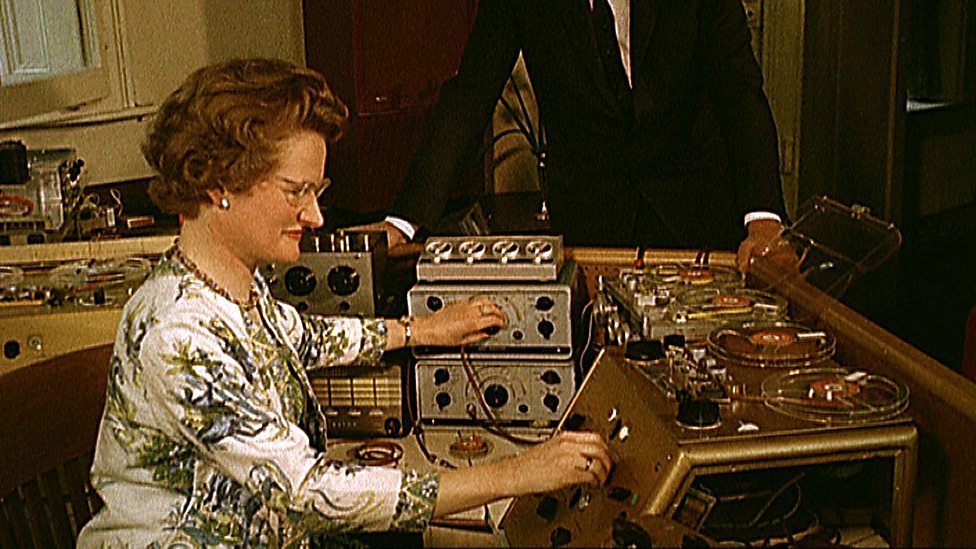I can honestly say I have never enjoyed researching another article more than I enjoyed this one. Daphne Oram is a wonder. A pioneer of ‘music concrete’ and one of the unknown, underappreciated godmothers of electronic music, Oram was the first woman to do many things: manage and direct an electronic music studio; set up a personal electronic studio; and construct an electronic musical instrument.
Her career began at the BBC, setting up the Radiophonic Workshop. Oram envisioned this as the in-house music and sound effects department for the BBC. However, she was frequently laughed out of the meeting room with the response that the BBC had many orchestras who could produce every imaginable sound. It wasn’t until Oram partnered up with fellow recording engineer Desmond Briscoe that the Radiophonic Workshop became a reality.
After leaving the BBC, Oram set up her own studio to pursue her creative brainchild: ‘Oramics’. Oramics was a technique of producing sound whereby you would draw directly onto 35mm film. Photo-electric cells would then translate drawings into sound. The possibility for nuance and control over the sounds produced was entirely innovative, and it’s a technique that still hasn’t been fully realised today.
In the late 1950s, Oram was using oscillators and tape splicers in ways that were as yet unimaginable, creating other-worldly electronic sounds that no orchestra could ever dream of producing. She said, ‘I want machines rather like computers to be an extension of the arm of the composer’. In one sentence, she predicted modern electronic music and production as we now know it.
Oram was reportedly visited by The Beatles, the Rolling Stones and The Who for advice and insight on music production. If Oram hadn’t turned down a place at the Royal College of Music to work at the BBC, who knows if Sergeant Pepper’s… would even exist?

